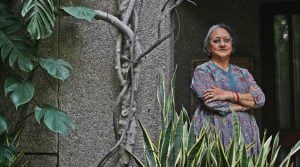Fairytales have long been known to be perpetuators of gender stereotypes which confine and limit possibilities which interrupt heteronormative and patriarchal narratives. Some of the best known stories of this genre have been Disney adaptations which quickly became the hallmark of the fairytale genre.
Although there have been attempts of late in which the ‘Happiness Conglomerate’ has been self reflective of its role in perpetuating damaging stereotypes, there still remains the fact that people who have grown up with these beloved classics, such as myself, are faced with a tug of war between their feminism and their childhood nostalgia. The following authors, however, provide an answer for adult readers faced with this conflict. Their collections of stories are by no means a replacement but are instead a reflection on the genre itself, and how it locates women within it.
In an inversion of the fairytale genre, therefore, these feminist, genre bending authors’ works are a carnivalesque extravaganza of horror, magic realism, erotica, surrealism, and science fiction. They serve to subvert the narrative of fairy tales in that common tropes such as happy endings of marriage and neat conflict resolutions are interrupted in favour of exploring the female body as a site of violence. Some stories offer resistance, others are a project in mapping female agency in a patriarchal structure.
people who have grown up with these classics are faced with a tug of war between their feminism and childhood nostalgia.
These are stories which ask readers to reconfigure everything that their favourite bedtime stories have taught them into the domain of chaos, violence, and surrealism in order to get a sense of the female experience with patriarchy. The following list has been curated according to common themes such as deconstruction of gendered norms, the female experience of violence as opposed to the gratifying account of violence as punishment, absence or deconstruction of the male gaze, satirisation of marriage, love, and beauty standards, and a reclamation of voice and agency – all of which are subversive to the format of the standard fairytale.
Note: Some of these are not suited for children for their violence and explicit sexual content.
1. Angela Carter, The Bloody Chamber

Image Source: The Guardian
Angela Carter is known for her subversive, shockingly grotesque and visceral style; with which she weaves together classic fairytales and legends reimagined to create an array of dizzyingly fantastical and often dark, feminist stories. In The Bloody Chamber, the titular story is one which carries resonances to Beauty and the Beast in which the narrator describes her marriage to a dazzlingly wealthy and much older Marquis who treats his bride with infantilising care. The story hinges on a familiar motif: a single section of the otherwise opulent mansion is forbidden for entry, and the narrator’s curiosity inevitably leads to her entering it.
Instead of a delicate magic rose symbolising love for love’s sake, she finds the mutilated bodies of the Marquis’ three wives before her. The Bloody Chamber turns the conventional trope of finding true love on its head and depicts the violence slumbering deep inside men like the Marquis who demand unquestioning obedience. The narrator, however, is rewarded for her disobedience as her mother charges to the scene on horseback, carrying a shotgun and rescuing her daughter in the place of a knight in shining armour.
Also read: 5 South Asian Writers Who Expanded The Boundaries Of Queer Literature
Wolf Alice is another story in Carter’s oeuvre in which femininity is deconstructed, as an animalistic non wolf non woman who was raised in the wilderness is captured by humans who want to tame her. She is eventually left to cohabit with a werewolf Duke who feasts on corpses; both of them are shunned by polite human society for not being quite human enough. The story follows her exploration of her own self through her body, which she inhabits in a liminal state between the feminine and the feral, eventually blurring the boundaries between the two.
2. Sarah Hall, Madame Zero

Image Source: The British Council
The first story in Hall’s collection follows a similar trajectory as Wolf Alice, in which a man watches his wife inexplicably turn into a fox. The woman who was formerly known as Sophie in her human form morphs just as she becomes pregnant, and the story follows the man’s distress as he attempts to adjust to this transformation and comes to the realisation that his wife isn’t coming back. The story begins with Hall describing Sophie from the male gaze of her husband, who is then forced to gaze at a being he does not understand and cannot grasp within the realm of his knowledge.
It allows Sophie to escape knowability and confers her with the freedom from being contained and reduced to a desirable body. Mr. Fox is a story in which a woman transforms from human to beast, and the husband who is left behind is forced to confront this reality and act in accordance with it. It explores questions of femininity, bodily agency, and love in a ways which challenge the normative discourses that traditional fairytales (such as Beauty and the Beast) construct through fantasy.
3. Carmen Maria Machado, Her Body and Other Parties

Image Source: Vulture
Machado’s collection of stories is an exploration of female desire and agency against structural and intimate violence within which women negotiate their lives. In The Husband Stitch, Machado plays with form and dips in and out of different stories warning of the consequences for disobedient girls. The narrator is full of energy and desire as she pursues what she wants; her lover, however, wants to know what the green ribbon around her neck is. He assumes that marrying her will allow him access to this forbidden part of her; he tries by force and is met with resistance and pleading.
These authors are here to challenge boundaries and notions surrounding bodies that are not privileged.
The story treads along to the inevitable conclusion, once again, of the bow being untied. However, the bow here is a metonymic representation of bodily agency, which the man who now exists in relation as a lawful husband, feels he can control. The story can be read as an inversion of the fairytale trope where marriage is the happily ever after that lovers seek as an end, by probing deep into the institution itself and exposing what happens after marriage.
In Real Women Have Bodies, Machado takes on the industrialisation of normative beauty in which an epidemic causes women to “fade”. Not quite dead or alive, the faded women exist in a state of corporeal slipperiness and begin to wreak havoc in protest by entering voting machines, ATMs and other electronic appliances. Faded women are also sewn into dresses, a violent representation of the reduction of women into clothing; whether it is those in the production process or those who consume them.
The clothes are all consuming, and incorporeality is the cost of trying to fit into them. A direct reference to the fashion industry is made when Machado invokes it to make a point about bodies being reduced to marketable standards, beyond that there is no use for women: “you can’t put clothes on air. Not that they haven’t tried.” The perfect dress which is often a symbol of redemptive beauty for fairytale heroines finding love is one that is a site of violent disfiguration and vaporisation of the women it rules over.
4. Manjula Padmanabhan, Three Virgins and Other Stories

Image source: The New Indian Express
Known for her acclaimed collection of fairytale inverting stories in Unprincess, Manjula Padmanabhan’s Three Virgins and Other Stories contains darker and more cynical themes which read the fairytale and mythic narrative against the grain. The result is a submersion into a kaleidoscopic world of characters evicted from epics and thrown into a future with cyborgs, parodies of the male gaze, and an overall concoction of stories which reclaim women’s voices and agency.
In Teaser, Padmanabhan narrates a day in the life of Rakesh, who believes he is endowed with divine power between his legs and organises his activity around harnessing this ‘power’ by leching at ‘targets’ in buses, referring to them as it. What follows is a disturbing account in which we witness the male gaze from the first person point of view, and are forced to take part in it until it is shattered by a woman in the bus who confronts him unexpectedly. Where fairytales describe love at first sight in terms of normative standards of beauty, Teaser upsets this trope by turning it into an ugly, predatory gaze.
In The Other Woman, Mandodari, Ravana’s forgotten wife, is plucked from the ancient setting of the Ramayana and plunged into a future where she wakes up to explore the world of technology, shopping malls and sweat shops in a quest to retell her story and reclaim the narrative constructed around her as a helpless, docile wife to a powerful demon-king. It is a story in which mythology is the site of inquiry, and characters such as Mandodari lend themselves to a retelling of the epic from their points of view.
Contesting narratives make for the weakening of claims to truth and in the process, allow for different possibilities to exist and deconstruct grand narratives which fairytales and myths work to built.
These authors are here to challenge boundaries and notions surrounding bodies that are not privileged, and they do so in a way which unsettles familiar beliefs. By having immortals beings break into Sears, having women’s sallow faces looking out from the folds of a dress, a woman saved from a deadly marriage by her mother then shacking up with her lover, a fox who gives birth to cubs she conceived as a human; these authors defamiliarise the ordinary and can be treated as the inverse of fairytales, in which the narrative is taken back.
Also read: 9 Indian Women Authors To Look Forward To In 2018
And sometimes, they offer resistance which, in contrast to the gratifying violence in the Brothers Grimm tales, is a celebration of an imagined landscape in which there is redemption for the violence visited upon women’s bodies.
This is by no means an exhaustive or representative list. Suggestions to add to this list are welcome in the comments section.
About the author(s)
Rohitha Naraharisetty is a student of Development Studies at IIT Madras. She is interested in gender studies, aspires to smash the patriarchy, and is terrible at writing clever bios.




